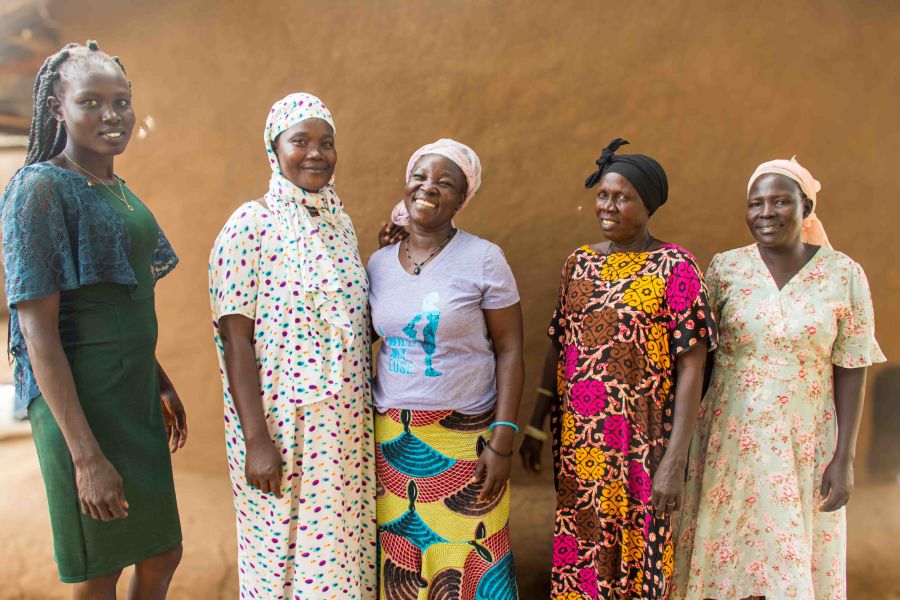
Navigating the Horn’s Borders
How Much is a Seed Money Worth? The Impact of a Small Grant on Borderland Communities
In the Horn of Africa, historical legacies of borders have created countries drawn across shared cultures, histories and socio-economic systems. These divisions create unique challenges and opportunities for communities living in these areas. Borderlands often face marginalisation and insecurity, resource scarcity and competition, limited movement of goods and people, and limited service provision for communities. However, these same borderlands also hold latent capacity, fostering vibrant cross-border trade, cultural exchange, and innovative solutions to shared challenges.
To these challenges, communities often have their own answers, and a little support can go a long way to bring these solutions to life. For example, $15,000 may seem like a small sum in the scheme of global aid, but for borderland communities it can be a lifeline- a seed of transformative change.
In an effort to support communities as they advance their own solutions to regional cross-border challenges, the Life & Peace Institute (LPI), in partnership with United Nations Development Program’s Africa Borderlands Center (UNDP-ABC), the UN’s Innovation Fund, and the Swedish International Development Cooperation Agency (Sida), provided small grants to groups of borderland civil society organisations (CSOs) to implement projects to strengthen human security in borderland communities across the Karamoja region of the Horn of Africa (Ethiopia, Kenya, Uganda and South Sudan - Cluster 1 – Ethiopia: 3 CSOs from South Omo, Cluster 2 – Kenya: 3 CSOs from West Pokot, Cluster 3 – Kenya: 4 CSOs from Turkana, Cluster 4 – Uganda: 4 CSOs from Karamoja (Moroto, Karenga and Kotido districts), Cluster 5 – South Sudan: 4 CSOs from Juba and Kapoeta).
Drawing on a long history of working with borderland communities, LPI designed this small grant initiative based on previous Learnings from implementation of small grantsand with a specific focus on the Karamoja borderlands. The goal of the small grants is to support cross-border communities to address human security needs, as identified and defined by them, in relevant, useful, and accessible ways. This builds on a commitment to quality resourcing to community-led organisations and to learn about how intermediary organisations and international non-governmental organisations (INGOs) can better partner with community-led organisations. In particular, the small grant focuses on providing flexible funding and resources and tools requested by partners to support their goals and community outcomes.
Working in the borderlands across large geographic areas has created challenges for many donors constrained by national boundaries, currencies, and regulatory frameworks. To address these challenges and spur collaboration and cooperation within the vast geographic area of Karamoja, funding was offered to “clusters” of CSOs and Community Based Organisations (CBOs). These CSOs and CBOs with multiple relevant expertise, came together to jointly develop projects based on ongoing activities addressing local human security (The Karamoja Cluster refers to a cross-border area encompassing parts of South-Western Ethiopia, North-Western Kenya, South-Eastern South Sudan, and North-Eastern Uganda, according to the Intergovernmental Authority on Development IGAD.)
Combining experience, resources, and personnel can strengthen programming and policy engagement. From the cluster approach, we are hoping to see organisations:
cross-learning and sharing of lessons, knowledge, and experiences as a means of strengthening approaches.
combining and pooling resources within the “cluster” to reach a wider audience and achieve greater impact.
acting and speaking with a united voice and amplifying advocacy for change to policymakers.
Yet, collaboration is challenging regardless of the context. It takes time, energy, and resources. Recognising this, we have developed specific assistance to support the success of the initiatives and provide opportunities for relationship-building and meaningful engagements that foster greater collaboration. In this regard, we have supported:
Jointly identified capacity support sessions bringing CSOs together to provide support with conflict sensitivity, policy and advocacy, financial compliance, and joint proposal development.
Communication channels and knowledge sharing forums such as online platforms and regular meetings among cluster members.
Regular check-ins to reflect on or answer questions, offer guidance, and help address any challenges that may arise.
Collaboratively developed MOUs, in addition to establishing clear roles and responsibilities, and shared visions and goals and agreements on communication expectations.
A representative from one of our clusters in South Sudan said: “The synergies and tapping of the unique skills and expertise from other organisations have been commendable thus far,” highlighting an initial positivity about the cluster approach.
While the grant is the catalyst for this story, the true focus lies in the resilience and determination of the borderland communities. It's about the power of collaboration, the ingenuity born of necessity, and the unwavering belief in a future where borders serve as bridges, not barriers. With the funding, the CSO clusters are currently leading projects focused on setting up platforms that enhance local initiatives for peacebuilding and capacitate borderland communities with different skills from conflict resolution to bookkeeping, entrepreneurship, and enhancing a common market transcending artificial boundaries.
Over the next few weeks, we are excited to bring you stories from the borderlands of how community leaders move solutions forward, deal with challenges, create shared visions, and build resilience in the face of adversity. Moving beyond grant mechanisms and processes, these stories will show people’s experiences building bridges, breaking down barriers, and creating a more peaceful future for Horn of Africa borderlands and the communities that live in them.